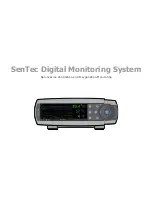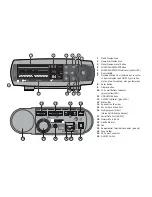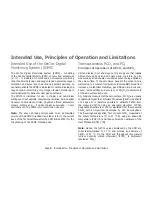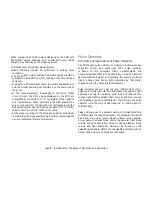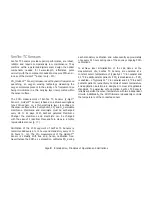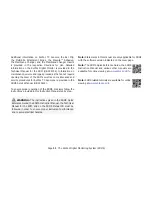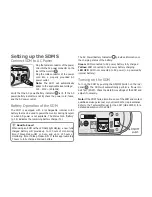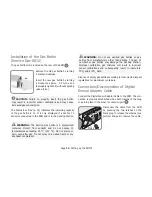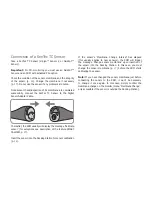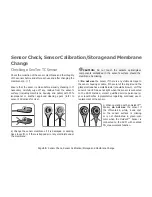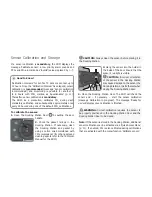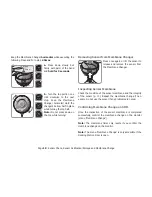
Page 5
.
Intended Use, Principles of Operation and Limitations
Intended Use of the SenTec Digital
Monitoring System (SDMS)
The SenTec Digital Monitoring System (SDMS) – consisting
of the SenTec Digital Monitor (SDM), sensors and accessories
(p.
10
) – is indicated for continuous, noninvasive monitoring
of carbon dioxide tension and oxygen tension as well as oxygen
saturation and pulse rate in adult and pediatric patients. In
neonatal patients the SDMS is indicated for carbon dioxide and
oxygen tension monitoring only. Oxygen tension monitoring is
contraindicated for patients under gas anesthesia.
The SDMS is indicated for use in clinical and non-clinical
settings such as hospitals, hospital-type facilities, intra-hospital
transport environments, clinics, physician offices, ambulatory
surgery centers and – if under clinical supervision – home
environments. The SDMS is for prescription use only.
Note: The above phrasing corresponds to an abbreviated
version of the SDMS’ Intended Use. Please refer to the current
issue of the Technical Manual for the SDM (HB-005752) for the
full phrasing of the SDMS’ Intended Use.
Intended Use, Principles of Operation and Limitations
Transcutaneous PCO
2
and PO
2
Principles of Operations of tcPCO
2
and tcPO
2
Carbon dioxide (CO
2
) and Oxygen (O
2
) are gases that readily
diffuse through body and skin tissue and, therefore, can be
measured by an adequate noninvasive sensor being applied at
the skin surface. If the skin tissue beneath the sensor site is
warmed up to a constant temperature local capillary blood flow
increases, metabolism stabilizes, gas diffusion improves and,
hence, reproducibility and accuracy of CO
2
/O
2
measurements
at the skin surface improves.
CO
2
tensions measured at the skin surface (PcCO
2
) are usually
consistently higher than arterial PCO
2
values (PaCO
2
) in patients
of all ages. It is therefore possible to estimate PaCO
2
from
the measured PcCO
2
using an adequate algorithm. TcPCO
2
designates an estimate of PaCO
2
calculated from the measured
PcCO
2
with an algorithm developed by J.W. Severinghaus.
The ‘Severinghaus Equation’ first corrects PcCO
2
measured at
the sensor temperature (T) to 37 °C by using an anaerobic
temperature factor (A) and then subtracts an estimate of the
local ‘Metabolic Offset’ (M).
Note: Hence, the tcPCO
2
values displayed by the SDM are
corrected/normalized to 37 °C and provide an estimate of
PaCO
2
at 37 °C. On the SDM and throughout this manual
(unless explicitly stated otherwise) ‘tcPCO
2
’ is displayed/
labeled as ‘PCO
2
’.


